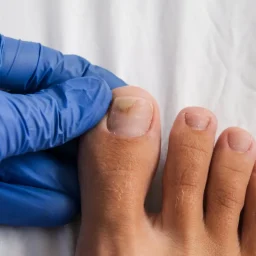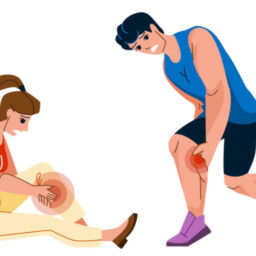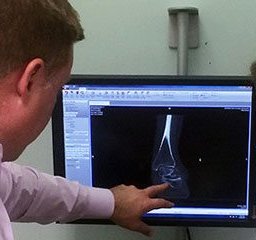
Did you know that podiatric issues in women are more likely than men, especially when experiencing foot problems. Approximately 90% of women reported foot pain at some point in their lives! Foot and ankle problems can significantly impact women’s quality of life, with 45% of women reporting that foot pain has limited their activities and 25% reporting that foot pain has negatively impacted their overall mood and happiness.
COMMON Foot Problems IN WOMEN to Look Out For
So, let’s dig deeper into some of the major podiatric issues in women and how they can tackle treatment for them:
- Plantar Fasciitis: This condition is characterized by inflammation and pain in the plantar fascia, a band of tissue that runs along the bottom of the foot. Treatment options include rest, ice, stretching exercises, orthotics, and in severe cases, surgery.
- Bunions: Bunions are bony bumps that form on the joint at the base of the big toe. They can be caused by genetics, improper footwear, and other factors. Treatment options include changing footwear, using orthotics, and in severe cases, surgery.
- Hammertoes: Hammertoes are characterized by an abnormal bend in one or more toes, which can be caused by genetics, poor footwear, or other factors. Treatment options include changing footwear, using orthotics, and in severe cases, surgery.
- Morton’s Neuroma: This condition is characterized by a thickening of the tissue around the nerve that runs between the third and fourth toes. Treatment options include rest, ice, wearing properly fitted shoes, and in severe cases, surgery.
- Ingrown Toenails: Ingrown toenails occur when the edge of the nail grows into the skin, causing pain and inflammation. Treatment options include soaking the foot in warm water, gently lifting the nail, and in severe cases, surgery.
- Corns and Calluses: Corns and calluses are thickened areas of skin that can be caused by pressure or friction. Treatment options include using pads to relieve pressure, wearing properly fitted shoes, and in severe cases, removing the thickened skin.
The treatment for these podiatric issues in women can vary depending on the severity of the condition. However, some general tips for preventing foot problems include wearing properly fitted shoes, avoiding high heels, maintaining a healthy weight, stretching regularly, and avoiding activities that cause excessive stress on the feet. It is also important to consult a podiatrist for proper diagnosis and treatment.
Tips and Tricks for Women’s Foot and Ankle Care:
- Wear Proper Footwear: It is essential to wear shoes that fit well and provide adequate support. Choose shoes that have a wide toe box, good arch support, and a firm heel counter. Avoid wearing high heels for long periods and opt for low or mid-heeled shoes instead.
- Keep Feet Clean and Dry: Wash feet daily with soap and water, and dry them thoroughly. Avoid keeping feet damp for long periods as this can lead to fungal infections.
- Moisturize: Apply moisturizer to feet daily to prevent dry skin and cracking. Avoid applying moisturizer between the toes as this can create a damp environment that promotes fungal growth.
- Exercise and Stretch: Regular exercise and stretching can help improve foot and ankle flexibility, strength, and overall health. Stretching before and after exercise can help prevent injury.
- Maintain a Healthy Weight: Being overweight can put extra pressure on the feet and ankles, leading to foot pain and other problems. Maintaining a healthy weight can help prevent foot and ankle problems.
- See a Podiatrist: Regular check-ups with a podiatrist can help detect and treat foot and ankle problems early. A podiatrist can also provide advice on proper foot care and footwear.
By following these tips, women can help prevent foot and ankle problems and maintain good foot and ankle health.
How can age factor into women’s foot and ankle health?
Age can play a factor in the foot and ankle care of women. As women age, the risk of foot and ankle problems increases due to factors such as decreased circulation, decreased flexibility, and wear and tear from years of use. Some common foot and ankle problems that may occur as women age include arthritis, plantar fasciitis, and foot and ankle fractures.
As women age, it is important to take extra care of their feet and ankles to prevent and manage foot and ankle problems. This includes wearing comfortable and supportive shoes, maintaining a healthy weight, performing regular foot and ankle exercises, and seeking treatment promptly for any foot and ankle problems that arise.
In addition, regular check-ups with a podiatrist can help detect and treat foot and ankle problems early, which can be especially important for women as they age. A podiatrist can provide advice on proper foot and ankle care and recommend treatments to manage any existing foot and ankle problems.
Foot and Ankle Care During Pregnancy
During pregnancy, women experience significant changes in their bodies, including changes in their feet and ankles. Wearing comfortable shoes is a must. Women must choose shoes that provide good support and are comfortable. Avoiding high heels and shoes that are too tight or have a narrow toe box is a win. Another tip is to keep feet slightly elevated. Elevate the feet whenever possible to reduce swelling. When sitting or lying down, place a pillow under the feet to elevate them. Compression socks are another recommended option because they can help to improve circulation and reduce swelling in the feet and ankles. However, before that, it is important to consult with your doctor to see if they are appropriate for you.
Practicing good foot hygiene is very important. Apart from washing feet daily, it is also critical to keep them dry so as to not suffer from fungal infections. Taking notice of dry and flaky skin is a plus – so that you can avoid cracks and tears in the foot. A good moisturizer goes a long way (be sure to check that it is cruelty-free and pregnancy-safe.
How Often Should Women Visit a Podiatrist?
The frequency of podiatrist visits for women can vary depending on individual needs and foot health status. However, as a general guideline, women should consider visiting a podiatrist at least once a year for a check-up, especially if they are over the age of 65 or have any pre-existing medical conditions that affect their feet such as diabetes or arthritis.
Additionally, women should schedule a podiatrist visit if they experience any foot or ankle pain, swelling, redness, or any other symptoms that affect their daily activities. Women who are pregnant or planning to become pregnant may also need to see a podiatrist to manage any foot or ankle problems that may arise during pregnancy.
It is important to note that some women may need more frequent podiatrist visits depending on their individual foot health needs. For example, women who have a history of foot problems or are on their feet for extended periods of time may need more frequent visits to monitor and manage their foot health.
Ultimately, women should consult with their healthcare provider or podiatrist to determine the appropriate frequency of podiatrist visits based on their individual foot health needs and medical history.
Choose Certified Foot and Ankle Specialists for all your foot and ankle needs.
When searching for a “female podiatrist near me”, consider looking at our list of doctors. The following doctors provide excellent care to our patients at various locations – Dr. Ashley Bowels, Dr. Jasmine Cruz, Dr. Yanine Velasquez, Dr. Megan Ziemer and Dr. Sara Zaidi. Visit our clinical foot care locations in St. Petersburg, Fort Myers, Jupiter, West Palm Beach and Vero. Find out which clinic is closest to you and schedule an appointment with our specialists by using the link below.





